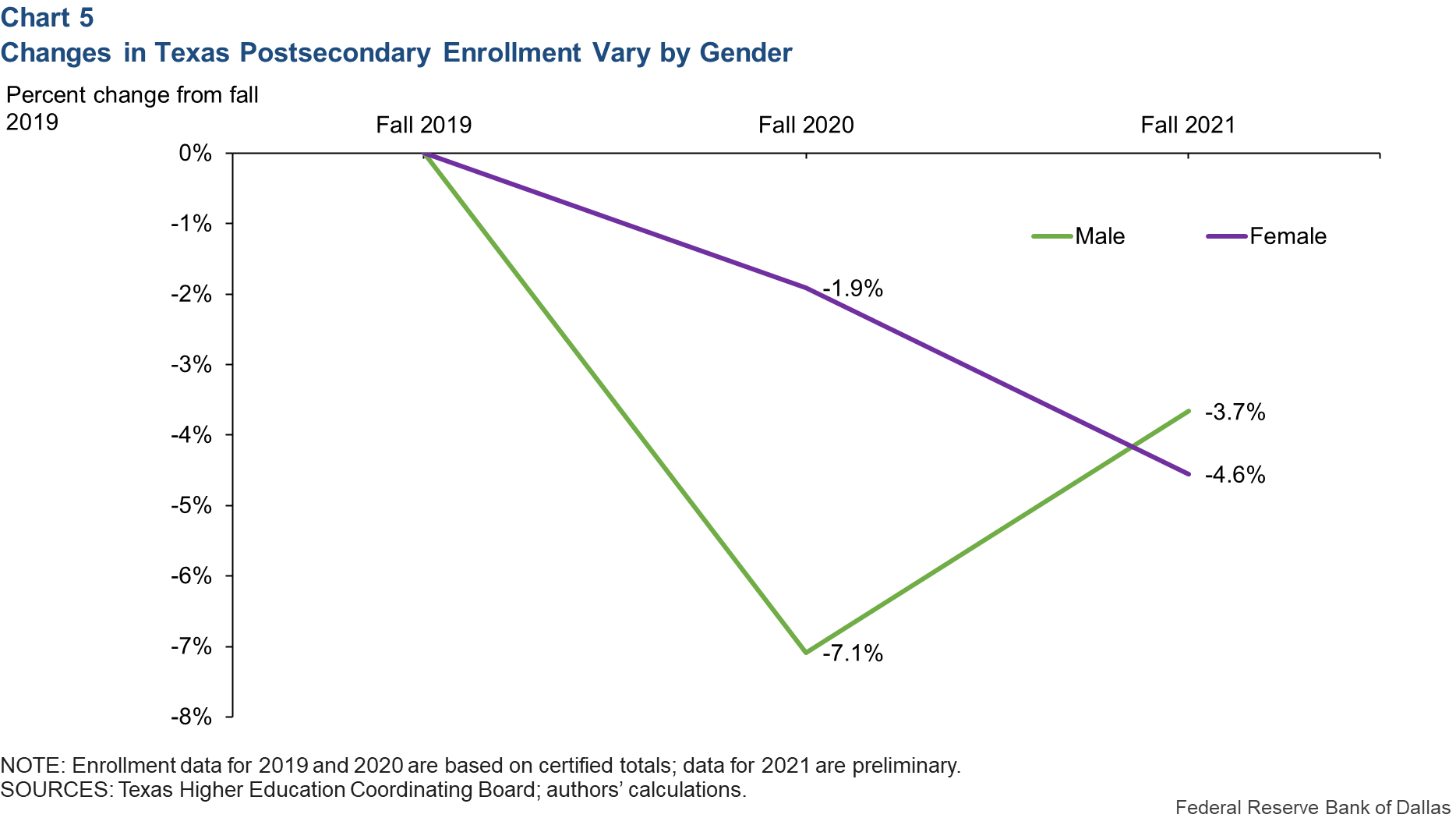
Skipping school: Enrollment numbers down for students ages 16–24 during pandemic
Part 1 | Part 3
Young people ages 16–24 are at a critical stage for building economic opportunity through education and workforce preparation. How are they faring during the COVID-19 pandemic? In a previous story, we explored the pandemic’s labor force impact on young adults. But pandemic-related hardships also likely contributed to a surge in the number of young people disconnected from school at both the secondary and postsecondary levels. This article focuses on these former students.
The term “opportunity youth” is used in the community development field to describe young people ages 16–24 who are disconnected from both work and school. Without reengagement, these young people are more likely to live in poverty, be involved in the criminal justice system and have poor health later in life. Put another way, they are less likely to be able to contribute to the economy and their communities.
Student disconnection
To examine the effect of the pandemic on education for 16–24-year-olds, we compare this population by school enrollment across six time intervals. We use September 2016 school enrollment data as a baseline to compare how enrollment changed leading up to and during the pandemic. The data cover both the U.S. and Texas and are broken down by those in high school, those attending college or university full time, those attending college or university part time and those not in school.
In the U.S., the share of young people enrolled in high school is relatively constant across our time intervals, besides a temporary bump in 2017 (Chart 1). The share of young people enrolled in high school in Texas, however, has been more temperamental, perhaps due to a smaller sample size on the state level. As of September 2021, the share enrolled in high school is down nearly five percentage points since September 2016. It is unclear how much of this decrease is attributable to the pandemic and how much of it is due to the relatively small sample size.

Nationwide, the share of full-time college students has decreased in recent years to about 1.2 percentage points lower than September 2016 figures (Chart 2). In Texas, the share of full-time college goers increased until September 2019 and has since fallen in the wake of the pandemic. While still relatively higher than September 2016, the share of full-time college students in Texas has seen its gains partially reversed.

In both the U.S. and Texas, the share of part-time college goers has decreased relative to 2016. This trend has stabilized somewhat nationwide during the pandemic years, while figures in Texas continue to fluctuate on a downward trend (Chart 3).

Perhaps the most striking pattern is among young people not enrolled in school. Both the U.S. and Texas saw an increase in the share of young people not enrolled in school in September 2020, soon after COVID hit (Chart 4). This trend has been especially pronounced in Texas, where the share of young people out of school in 2021 grew to 3.9 percentage points higher than in 2016 (47.4 percent of 16–24-year-olds compared with 43.5 percent five years earlier).

Differences by gender and race in Texas
In general, male college enrollment has been in decline for some time, with the pandemic only exacerbating this trend. Students in Texas are no exception. Male enrollment dropped by 7.1 percent between 2019 and fall 2020, compared with 1.9 percent for female students. However, preliminary data from fall 2021 suggest that male enrollment has improved while female enrollment has worsened. Female enrollment in fall 2021 is 4.6 percent lower than in 2019, and male enrollment is now only 3.7 percent lower than in 2019 (Chart 5).

Chart 6 looks at college enrollment trends by race and ethnicity for Texans who graduated from high school in 2020 (the last year for which full data are available). Compared with the graduating class of 2019, the overall share of Texas high school graduates enrolling in four-year public universities decreased by 1.4 percentage points, while the share enrolling in two-year public colleges declined by 5.7 percentage points.

Across different racial and ethnic groups, one of the largest changes over the past year has been the steep decline in the share of Hispanic graduates enrolled at community colleges—a drop of nearly eight percentage points. The share of Black and Asian/Pacific Islander graduates enrolled at community colleges also dipped by more than the statewide average, with rates for both groups down nearly five percentage points. At four-year universities, Asian enrollment rates suffered the largest decline (down 5.2 percent), with enrollment for Black graduates also declining faster than the statewide average (down 2.5 percent).

Explaining the disconnection
These data indicate key trends to explore in attempting to help young people reengage in education:
- Young Texans ages 16–24 are more likely to be out of school today than prepandemic. Texas lost an especially large share of would-be full-time community college and university students.
- Male students in Texas saw a steeper decline in college enrollment in 2020 but have somewhat recovered in 2021. Female student enrollment, on the other hand, continues to drop.
- In Texas, community colleges saw a bigger drop in enrollment among recent high school graduates than four-year institutions did; this trend was especially notable among Hispanic students.
What is behind these trends, and how can they be addressed? The third and final installment in this series will feature insights from key stakeholders in education and workforce development. They’ll tell us how the pandemic affected their communities and where current opportunities exist to get disconnected young people back into the economy.
About the Authors
The views expressed are those of the author and should not be attributed to the Federal Reserve Bank of Dallas or the Federal Reserve System.

